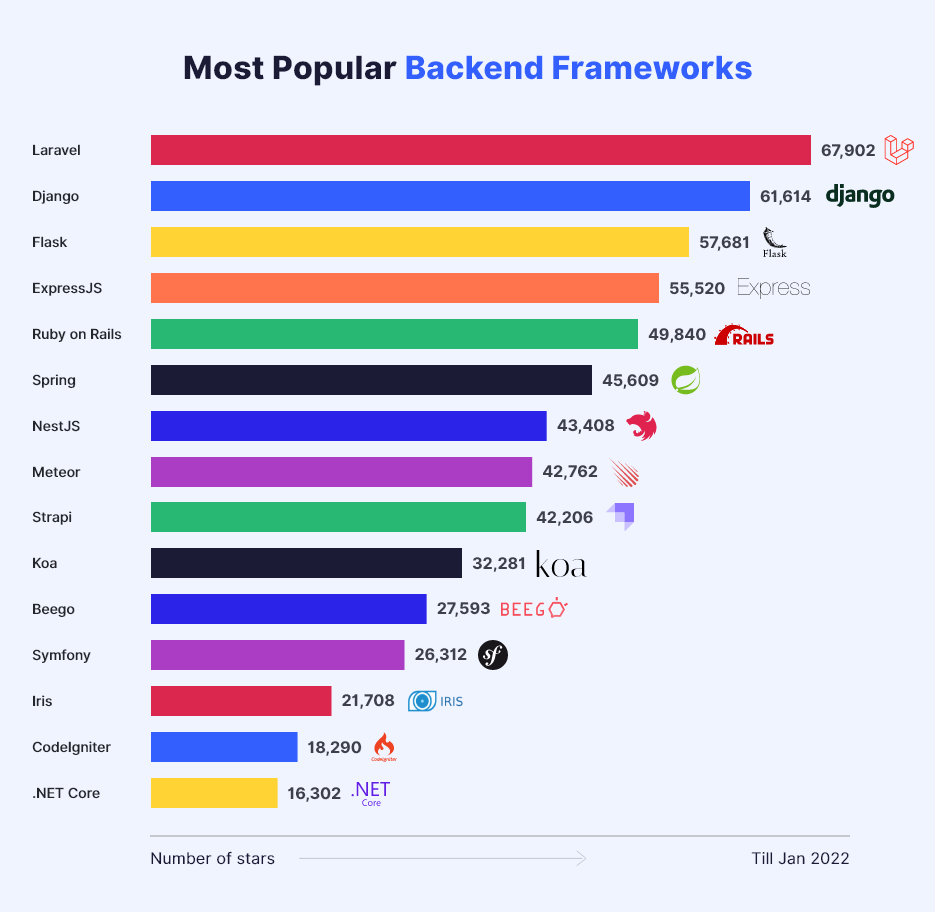Backend Framework
What is a Backend Framework?

Definition:
A “Backend Framework” in the realm of software engineering refers to a structured and pre-built foundation that simplifies and accelerates the process of backend development. It provides developers with a set of tools, libraries, and conventions to streamline the creation of server-side applications. Backend frameworks offer a structured environment for building logic, handling databases, and managing server operations, allowing developers to focus on application-specific features rather than low-level details.
Analogy:
Think of a Backend Framework as a construction kit for building the engine of a car. While a car engine involves intricate components and processes, the construction kit (framework) provides a standardized set of tools and instructions. Developers, like mechanics, use this kit to assemble the engine (backend), making the development process more efficient and ensuring a reliable and high-performing result.
Further Description:
Backend Frameworks simplify complex backend development tasks by providing pre-defined structures for routing, database interaction, and other common functionalities. These frameworks often follow the Model-View-Controller (MVC) architecture, separating application logic, user interface, and data storage concerns. Backend Frameworks support multiple programming languages, with popular ones including Django and Flask for Python, Ruby on Rails for Ruby, and Express.js for JavaScript.
Why is a Backend Framework Important?
A Backend Framework is essential for expediting the development process, promoting code consistency, and ensuring best practices in backend development. By adhering to a framework’s conventions, developers can create scalable, maintainable, and secure applications. Backend Frameworks also facilitate collaboration among developers, as they follow a standardized structure and coding patterns, making it easier for different team members to understand and contribute to the codebase.
Examples and Usage:
Django (Python): Django is a high-level Python web framework that follows the MVC pattern and includes an ORM (Object-Relational Mapping) for database management.
Ruby on Rails (Ruby): Ruby on Rails, or Rails, is a full-stack web application framework for the Ruby programming language, emphasizing convention over configuration.
Express.js (JavaScript): Express.js is a minimal and flexible Node.js web application framework that provides a robust set of features for web and mobile applications.
Spring Boot (Java): Spring Boot is an extension of the Spring framework that simplifies the development of production-ready applications with Java.
Basically, a Backend Framework acts as a toolkit for developers, offering pre-built structures and conventions to streamline the backend development process. It allows developers to focus on building application-specific features rather than dealing with low-level complexities.
For example, using a framework like Django, developers can quickly set up a database, define models, and create routes for handling user requests, saving time and ensuring a standardized approach.
Key Takeaways:
- A Backend Framework is a structured and pre-built foundation that accelerates backend development by providing tools, libraries, and conventions.
- It simplifies complex tasks, such as routing, database interaction, and server operations, allowing developers to focus on application-specific features.
- Backend Frameworks follow the Model-View-Controller (MVC) architecture and support multiple programming languages.
- They are crucial for expediting development, promoting code consistency, and ensuring best practices in backend development.




